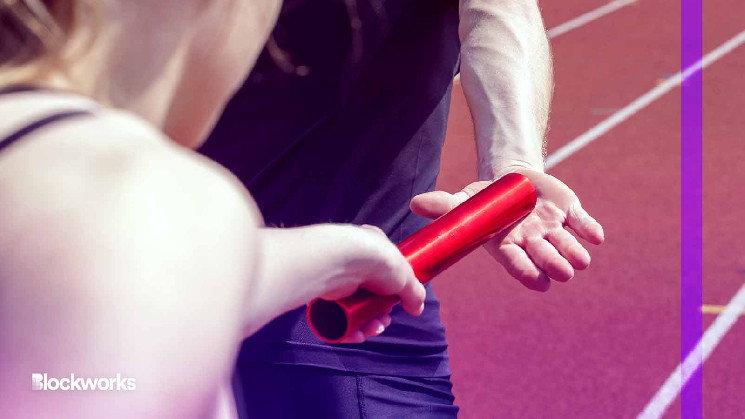Blockchain
Ethereum is constructed on the rules of decentralization, trustlessness and free market competitors. So it is perhaps shocking to study that an necessary mechanism within the protocol’s ecosystem is centralized, should be trusted and affords no financial incentive.
Relays carry out a key function within the infrastructure that helps MEV — or most extractable worth — on Ethereum. Current between builders and validators as middlemen, relays soak up giant quantities of visitors from builders by solely sending choose blocks to validators.
The issue, as Matt Cutler, CEO and co-founder of Blocknative, defined on the Bell Curve podcast, is threefold: Few relays exist, they should be trusted, and they don’t at the moment supply profitability to relay suppliers.
“In the intervening time, there are 11 relays that energy the Ethereum community,” Cutler says. “However solely seven of them have greater than 1% share [of the market].”
“It’s fairly centralized, extra centralized than any of us would really like.”
On prime of that, the MEV-Increase community is very depending on these few relays. “With out the relays, the community doesn’t function, which means that the MEV-Increase community is solely depending on them. They require 100% uptime as a result of in the event that they don’t do their job, you will have missed slots.”
Cutler factors out one essential downside: “There’s completely no financial incentives for working the relays.” Though the function carries prices and danger, it affords nothing in return.
“And in reality, in case your relay doesn’t do its job or there’s some misconfiguration and also you miss slots, the validators typically anticipate reimbursement. So that they have adverse economics.”
“The economics of it sort of suck at present,” host Michael Ippolito agrees.
Learn extra: MEV: Who Ought to Revenue From a Protocol’s Financial Exercise?
Boosting relay participation
“One of many issues we’re making an attempt to do,” says Cutler, “is encourage extra groups to take part as relays and to develop their very own relays to encourage relay variety.”
Cutler argues that relays supply “great worth to your entire community.” MEV-Increase makes use of block area extra effectively, will increase the bottom price burn, and pays validators considerably extra, boosting the safety finances.
“And so there’s an enormous quantity of profit that’s pushed particularly by the work of the relays and the remainder of the availability chain and but none of that worth is at present shared with these infrastructure operators.”
This results in an fascinating conundrum: is there a option to pay relay suppliers with out breaking the system?
Bell Curve podcast co-host Hasu, technique lead at Flashbots, factors out that relays will not be truly needed for all events as a result of “solely untrusted events can be excluded from the MEV provide chain if relays didn’t exist.”
Monetizing relays, Hasu argues, might inadvertently enhance fragility within the system. Some contributors may select to bypass relays to save lots of on prices. Within the present design, he says, “We’ve got a social consensus — the social norm that everyone goes by way of a relay. And that’s actually necessary as a result of we wish everyone to function on the identical footing.”
“However as soon as we begin monetizing relays,” he says, it could drive away sure events as a result of that might “enhance their backside line.”
Cutler counters Hasu’s argument, explaining, “We wish a number of relays. We wish lots of people going, ‘Look, the economics right here is superb. It is a nice enterprise to get in, and we will add worth right here.’”
“At present,” Cutler provides, “there’s a small set of personal entities who’re utilizing enterprise capital cash to assist the community and a few public items which have handed the hat.”
“And that strikes me as — on the core of the community — not sustainable and never best for a community that mainly is making an attempt to have the ability to fund its personal operations general.”
“It’s not a free service. It’s, the truth is, a really costly service — and a excessive danger service.”
“In the end,” Cutler says, “on a protracted sufficient timeline, this stuff will not be sustainable.”
Relays as a public good
In response, Hasu argues that one ought to as an alternative take a look at the relay system as a “public good.”
“We pay the identical value as you guys do at Blocknative for operating the Flashbots relay. And we do this as a result of we expect it’s important to uphold this market construction.”
“We’ve got to speak about it,” Hasu says, “from a funding public items angle, extra so than from an angle of how we will flip this right into a market that may be monetized efficiently.”



